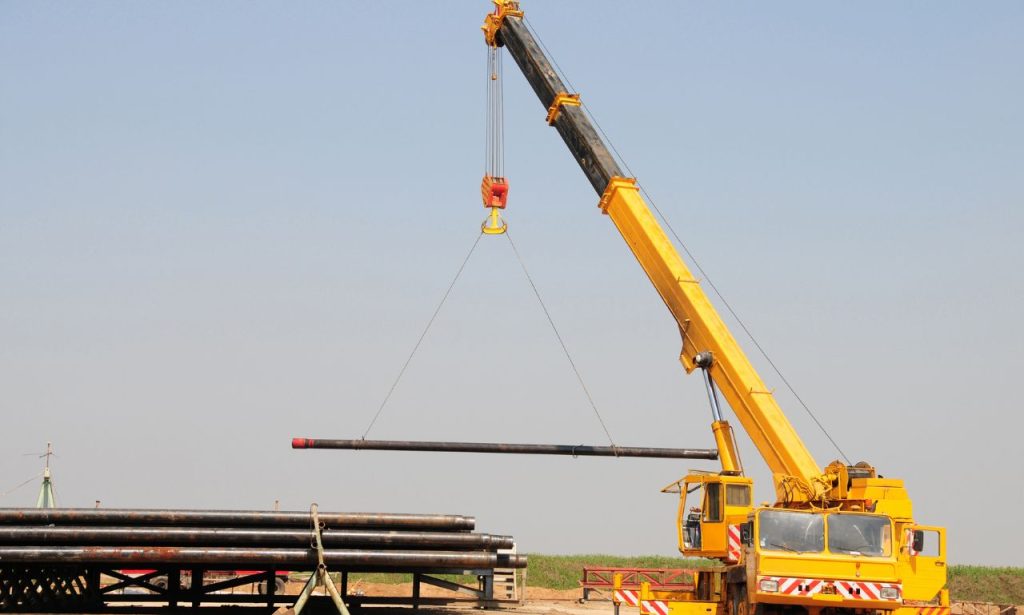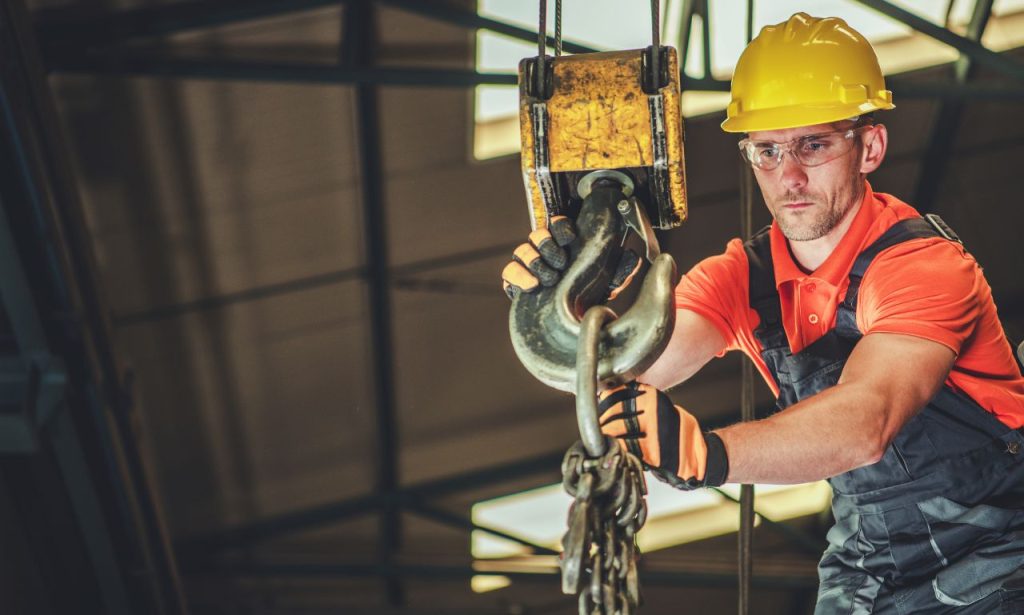Think about this for a moment—when a crane shows up on-site, the real work doesn’t start when the hook lowers; it starts long before. A poorly prepared jobsite can turn into a disaster, and in construction, mistakes are expensive. According to OSHA, nearly 90 crane-related deaths occur each year in the U.S., many linked to avoidable preparation failures. That’s why preparing the site properly isn’t just about ticking boxes—it’s about protecting lives, budgets, and timelines.
In this article, we’ll break down the step-by-step tips for preparing a jobsite for a crane lift. We’ll talk about groundwork, lift planning, safety, coordination, and even the one factor no one controls—weather. Think of this as a practical guide you can keep in your back pocket, whether you’re a project manager, safety officer, or contractor.
The Pre-Lift Foundation
Before the boom rises sky-high, the foundation is laid—literally and figuratively. Preparation forms the backbone of any successful crane lift. Contractors who rush into lifting without proper groundwork often encounter costly setbacks. A case study shared by a crane rental company in Texas highlighted how ignoring a soil test led to the crane tipping when the ground softened after an overnight rain. That single oversight delayed the project by weeks and ballooned costs by hundreds of thousands.
So, what’s the takeaway? Think of jobsite prep as building a stage before the actors arrive. Without the stage, the performance collapses.
Comprehensive Site Survey and Terrain Analysis

The first order of business is understanding the lay of the land. Cranes are not “park it anywhere” machines. They demand stable, level ground and a clear understanding of the terrain. A proper site survey involves checking slopes, underground utilities, and potential hazards, such as overhead lines.
A good example comes from a project in New York where a large crawler crane was scheduled to move prefabricated modules. Engineers used drones to scan the site, mapping every elevation change. That data revealed a subtle grade issue on one side of the site. Fixing it before the crane arrived saved a tremendous amount of time and prevented the risk of uneven load distribution.
Skipping this step is like hiking a mountain trail without a map—you’re asking for trouble.
In-Depth Ground Condition Assessment
If the ground can’t hold the crane, nothing else matters. This is where geotechnical assessments come into play. Cranes, especially heavy-duty models, exert ground pressures exceeding 4,000 pounds per square foot. That’s like parking several SUVs on each square foot.
Contractors must verify soil bearing capacity through testing. In one highway project in Florida, engineers placed temporary crane mats after discovering soft clay in the lifting zone. Without those mats, the crane’s outriggers would have sunk, creating instability during the lift.
Think of it as checking the foundation of a house—you wouldn’t build on shaky ground, so don’t lift on it either.
Crafting the Robust Lift Plan Course for Success
A lift plan is not paperwork for the sake of paperwork. It’s the blueprint of success. Proper planning accounts for the load weight, crane capacity, rigging methods, and even the operator’s line of sight.
In Chicago, a construction firm working on a high-rise used 3D modeling software to simulate every step of a steel beam lift. This pre-visualization showed potential conflicts with nearby scaffolding, which could have gone unnoticed until the day of the lift. Fixing the issue digitally meant zero downtime when the crane arrived.
Bottom line: the lift plan turns guesswork into certainty.
Developing the Detailed Crane Pick Plan
The “pick” plan goes deeper than the overall lift strategy. It maps out exactly where the crane sets up, where the load attaches, and how it moves through space. Imagine choreographing a dance—every step must be deliberate and precise.
For instance, in the oil and gas sector, companies often lift massive vessels weighing hundreds of tons. A pick plan ensures the crane’s boom angles and radius stay within safe limits throughout the lift. Missing one detail can overstress the crane, potentially leading to catastrophic failure.
That’s why experienced lift directors often say: “If it’s not on the pick plan, it doesn’t happen.”
Planning the Lift Path and Sequence
The path isn’t just about point A to point B. It’s about avoiding obstacles, minimizing risk, and ensuring workers stay clear. Picture swinging a refrigerator through a crowded kitchen. Now, multiply the scale by 1,000.
A notable case happened in Toronto where a tower crane was tasked with lifting HVAC units onto a skyscraper. The planned lift path crossed over an adjacent street. Coordinating with city officials, the team arranged for temporary street closures during off-peak hours, thereby minimizing public risk and ensuring an uninterrupted lift.
Planning the sequence also prevents double-handling of loads. Each step should flow into the next without surprises.
Leveraging Technology in Lift Planning
Modern tools make lift planning smarter. Drone surveys, 3D simulations, and even augmented reality overlays give contractors a bird’s-eye view before the lift. These aren’t gimmicks—they’re lifesavers.
In Seattle, contractors used BIM (Building Information Modeling) integrated with crane specs to test lift feasibility in tight urban spaces. The virtual lift revealed blind spots for the operator, leading to the installation of additional cameras on the crane.
Technology doesn’t replace human judgment, but it sharpens it.
Access and Clearance by Ensuring Unrestricted Movement
Cranes are bulky, and moving them around isn’t like parking a sedan. Without proper access, the entire lift operation grinds to a halt.
Establishing Clear Access Routes
Access routes must handle the crane’s size, weight, and turning radius. That might mean reinforcing temporary roads, widening gates, or coordinating with traffic control.
On a wind farm project in Texas, contractors had to transport massive crawler cranes across farmland. They built temporary gravel roads to handle the equipment. Without them, the crane’s sheer weight would have destroyed the fields and risked bogging down in wet soil.
Clear routes equal smooth operations.
Maintaining Adequate Operational Clearance
Once the crane is in place, it requires space to operate. Overhead power lines, nearby buildings, and even tall trees can limit safe operations. OSHA requires at least 10 feet of clearance from power lines, and even more for higher voltages.
One memorable incident involved a crane brushing against an unmarked line, causing a city-wide outage. That mishap could have been avoided with a simple clearance check.
Think of clearance like personal space—crowding a crane is never a good idea.
Safety and Compliance in Meeting Standards and Protecting Lives
Safety isn’t just a buzzword—it’s law. OSHA, ANSI, and local regulations establish clear guidelines for crane lifts, and ignoring them carries significant fines and risks to human life.
Case in point: In 2019, a crane collapsed in Seattle, killing four people. Investigators found safety shortcuts during disassembly. That tragedy became a wake-up call for stricter compliance monitoring across the industry.
Following safety standards isn’t about red tape—it’s about sending workers home safely every night.
Communication and Coordination in the Human Element of a Safe Lift
No lift succeeds without people working in sync. Operators, riggers, signalers, and supervisors must communicate in real time. Hand signals, radios, and pre-lift meetings make sure everyone’s on the same page.
On one refinery job in Louisiana, a crane operator was unable to see the load due to obstructions. The rigging crew relied on a trained signalman with radio backup. That coordination prevented a potentially dangerous swing.
A crane lift is like a symphony—it only works when everyone plays their part.
Contingency Planning and Weather Preparedness

Mother Nature doesn’t check the project schedule. High winds, rain, and lightning can stop a crane lift cold. Wind speed, in particular, is critical; most cranes have strict limits, often around 20–30 mph, for safe operation.
A Florida contractor preparing to lift precast panels postponed the lift three times due to tropical storm warnings. Frustrating? Yes. But when the winds calmed, the lift went smoothly without incident.
Having a “Plan B” for weather delays avoids risky last-minute decisions. Always respect the sky—it wins every time.
Conclusion
Preparing a jobsite for a crane lift is not just about logistics—it’s about foresight, discipline, and respect for safety. From surveying the ground to planning the path, ensuring clearance, coordinating teams, and watching the weather, every detail counts.
The real test of preparation shows up not on paper, but when the crane is on-site and everyone is depending on that planning to keep them safe. If you want lifts that go up without drama, preparation isn’t optional—it’s everything.
FAQs
The first step is conducting a comprehensive site survey and ground condition analysis to ensure stability.
It details the exact lift sequence, crane setup, and boom angles, reducing risks during lifting operations.
High winds and storms can make lifts unsafe. Always check weather forecasts and have contingency plans in place.
Everyone has a role, but the lift director or site supervisor typically oversees compliance and safety.
Tools like drones, BIM, and 3D simulations identify hazards, test lift paths, and improve coordination before execution.




